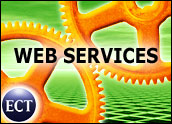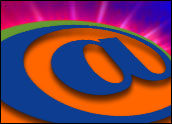
How significant is a Web site to your organization? My impression is that for businesses who have devoted the resources to develop and maintain an effective online presence, its Web site’s impact is unprecedented, and for the folks who haven’t gone down that path, it’s value and profitability are marginal.
The term “Web 2.0” means different things to different people. In some circles, it refers to the emergence of social networking and personalization as the new frontier of the Internet. Facebook, MySpace, YouTube and the rest were not on the radar screen a few years ago.
From my perspective, I look to the evolution of both the quality and intuitiveness of Web sites as well as the tools and channels that are now available to efficiently market those sites. The focus for this article is the opportunities to increase the flow of qualified visitors to a Web site by utilizing more advanced tactics.
Diligence Is Essential
Back for a moment to companies who haven’t been able to make the Internet work for them — it’s tempting to excuse the industry as being one that doesn’t lend itself to an online situation. While there may be a handful of circumstances where this is actually the case (though none immediately come to mind), the real test is whether (competing) firms are paying for traffic on a consistent basis for words that are mission critical to the business. If the answer is yes, then it means the opportunity exists if the company can be diligent enough to pursue it.
I use the word diligent, because there is nothing easy about Internet marketing today. That window of opportunity closed several years ago. In order to be truly successful online — in addition to having a very good site — a company needs to effectively employ both search engine marketing (SEM) and search engine optimization (SEO). Below are several Web 2.0 recommendations for SEM and SEO.
While there is a number of distinctions between SEO and SEM — the most notable being that with SEO the traffic is nonpaid and with SEM there is a cost — they share a common thread. Both efforts are driven by keywords, and the more well conceived the list, the more favorable the end result will be.
Although there are a number of tools that firms such as ours use to guide the keyword selection process, it’s also vital for the client to spend quality time speaking to colleagues and clients and studying competitors’ sites in order to determine the most appropriate keyword menu to pursue. While there may be some subtle differences between the keyword list for SEO and SEM, the majority of keywords will be the same.
Key SEO Tactics
Search engine rankings are a function of sophisticated algorithms. Minor changes and updates can alter your rankings. While it is true that the algorithms are a moving target, which no one can fully explain, the factors that lead a Web site to perform well in the natural results are fairly consistent.
A top-level issue is the degree to which a site contains hearty content that aligns closely to the keywords which are most important to the site. If, for instance, the keywords in the Meta tags, etc., are related to human resources consulting and the content speaks to employee training programs, then there is a problem. While that may sound obvious, you would be surprised how often companies change product lines or direction, and don’t fully incorporate the new direction into both the content and architecture of its Web site.
Try also to limit the number of keywords and phrases per page to two or three. Incorporating content about more than two or three keywords onto any Web page will weaken your message on the page, which won’t be viewed favorably by the search engines.
Get Friendly With Engines
Another step in making your site as search engine-friendly as possible is to ensure that the architecture doesn’t present any obvious roadblocks. Flash is probably the best example of a technology that is much more aligned for the end user than for the search engine spidering process. It’s OK to have some Flash on the site, but it’s not a good idea, from a search engine ranking perspective, to have a home page that is all Flash. In general, the less, the better.
Both content management systems (CMS) and template driven Web sites can be problematic for SEO. The problem with many of these frameworks is that the site owner has very little ability to make modifications to the coding of the site and the majority of templates are not SEO-friendly to begin with. Before purchasing a new Web site that is template or CMS driven, be sure to investigate the degree to which it has been designed with SEO requirements in mind.
Lastly, commit to a link development initiative, as link popularity is a component of the ranking criteria for the major engines, particularly Google. The greater the number of quality inbound links you have to your site, the better. Be careful, as link building is often abused, which can cause more harm than good. Incrementally adding relevant links to your site is the best approach.
Advanced SEM Methodology
I probably shouldn’t have titled this section “advanced,” because what I have to say is really simple. Just like any other component of direct marketing, it’s vital to measure campaign performance — then continue to test and refine.
What’s relevant about this topic is the dramatic improvement in the tools that are available to figure out what’s working and what isn’t. Variables include engine selection (MSN vs. Google, etc.), keywords (broad vs. narrow, exact/negative match, etc.), as well as factors like which pages of your site are moving a prospect toward your objective in contrast to others that may be hindering a conversion.
It used to be that the cost associated with analytics programs was substantial, therefore only the largest online players could justify the expense. With free and low-cost programs like Google Analytics, the investment is now limited to the time required to set the tools up properly (including coding the site) and the post click analysis of the data. I continue to hear stories of larger organizations abandoning their high end solutions for this new wave of technology, as it’s much easier to both install and evaluate important data in a timely manner.
The number of companies who have a genuine understanding of the activity on their site and more specifically their SEM related statistics remains minute. The opportunity to gain a competitive edge through utilizing this data is significant.
Improved Web marketing is not about utilizing any particular technology or channel, it is about investing time and resources to pinpoint and execute a profit-generating strategy. For certain organizations this is practiced continuously (both online and off-line). For others, now is a perfect time to get refocus and make the Internet a vital component of your marketing efforts.
Andrew Wetzler is president of MoreVisibility, a search engine marketing and search engine optimization agency.




































Social Media
See all Social Media